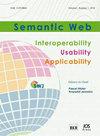利用“连接”框架在网上发布公共交通数据
IF 2.9
3区 计算机科学
Q2 COMPUTER SCIENCE, ARTIFICIAL INTELLIGENCE
引用次数: 0
摘要
在Web上发布传输数据供其他人使用给数据发布者带来了一些挑战。除了计划的时间表,访问实时时间表更新(例如延迟或取消)和历史数据是实现可靠应用程序和支持机器学习用例的基础。然而,发布这种动态数据进一步增加了数据发布者的计算负担,导致大多数公共交通网络经常无法获得历史数据和实时时间表更新。在本文中,我们应用并扩展了当前用于静态数据的链接连接方法,以支持在Web上发布具有成本效益的实时和历史公共交通数据。我们的贡献包括(i)一个参考规范和系统架构,以支持经济高效地发布动态公共交通时刻表和历史数据;(ii)基于数据碎片大小、发布成本以及与传统路由规划引擎(如OpenTripPlanner)的比较,对路由规划查询性能进行实证评估;(iii)分析查询表现与特定公共交通网络特征(例如规模、平均程度、密度、聚类系数和平均连接时间)的潜在关联。结果证实,碎片大小影响路由规划查询性能,并收敛于每个网络的最优碎片大小。大小(站点)、密度和连接时长也与路由规划查询性能相关。事实证明,我们的方法更具成本效益,在支持最早到达时间路线规划用例时,在某些情况下优于OpenTripPlanner。此外,对于服务器端资源来说,与仅发布计划调度相比,发布实时调度和历史调度的成本保持在相同的数量级。然而,对于更大的网络(bbb1000个站点),需要进一步的优化才能在实践中发挥作用。可以研究额外的数据集碎片策略(例如地理空间),以设计更具可扩展性和高性能的Web api,以适应特定的用例,而不仅仅局限于公共交通领域。本文章由计算机程序翻译,如有差异,请以英文原文为准。
Publishing public transport data on the Web with the Linked Connections framework
Publishing transport data on the Web for consumption by others poses several challenges for data publishers. In addition to planned schedules, access to live schedule updates (e.g. delays or cancellations) and historical data is fundamental to enable reliable applications and to support machine learning use cases. However publishing such dynamic data further increases the computational burden for data publishers, resulting in often unavailable historical data and live schedule updates for most public transport networks. In this paper we apply and extend the current Linked Connections approach for static data to also support cost-efficient live and historical public transport data publishing on the Web. Our contributions include (i) a reference specification and system architecture to support cost-efficient publishing of dynamic public transport schedules and historical data; (ii) empirical evaluations on route planning query performance based on data fragmentation size, publishing costs and a comparison with a traditional route planning engine such as OpenTripPlanner; (iii) an analysis of potential correlations of query performance with particular public transport network characteristics such as size, average degree, density, clustering coefficient and average connection duration. Results confirm that fragmentation size influences route planning query performance and converges on an optimal fragment size per network. Size (stops), density and connection duration also show correlation with route planning query performance. Our approach proves to be more cost-efficient and in some cases outperforms OpenTripPlanner when supporting the earliest arrival time route planning use case. Moreover, the cost of publishing live and historical schedules remains in the same order of magnitude for server-side resources compared to publishing planned schedules only. Yet, further optimizations are needed for larger networks (>1000 stops) to be useful in practice. Additional dataset fragmentation strategies (e.g. geospatial) may be studied for designing more scalable and performant Web apis that adapt to particular use cases, not only limited to the public transport domain.
求助全文
通过发布文献求助,成功后即可免费获取论文全文。
去求助
来源期刊

Semantic Web
COMPUTER SCIENCE, ARTIFICIAL INTELLIGENCEC-COMPUTER SCIENCE, INFORMATION SYSTEMS
CiteScore
8.30
自引率
6.70%
发文量
68
期刊介绍:
The journal Semantic Web – Interoperability, Usability, Applicability brings together researchers from various fields which share the vision and need for more effective and meaningful ways to share information across agents and services on the future internet and elsewhere. As such, Semantic Web technologies shall support the seamless integration of data, on-the-fly composition and interoperation of Web services, as well as more intuitive search engines. The semantics – or meaning – of information, however, cannot be defined without a context, which makes personalization, trust, and provenance core topics for Semantic Web research. New retrieval paradigms, user interfaces, and visualization techniques have to unleash the power of the Semantic Web and at the same time hide its complexity from the user. Based on this vision, the journal welcomes contributions ranging from theoretical and foundational research over methods and tools to descriptions of concrete ontologies and applications in all areas. We especially welcome papers which add a social, spatial, and temporal dimension to Semantic Web research, as well as application-oriented papers making use of formal semantics.
 求助内容:
求助内容: 应助结果提醒方式:
应助结果提醒方式:


